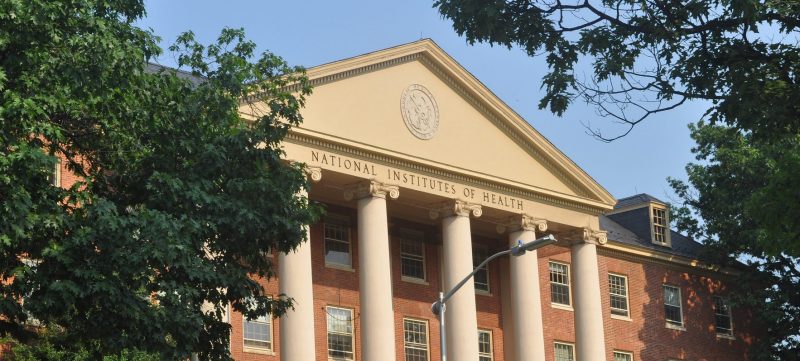The Health and Human Services Department recently hosted its first ever Human Resources (HR) Clinic at the National Institutes of Health (NIH) campus in Bethesda, Maryland. The two-day HHS HR Clinic served as an opportunity for HR professionals to learn how to incorporate HHS priorities into daily HR functions; build relationships and network with other HR professionals; and discuss best practices.
The two days consisted of several tracks designed to address the priorities of a 21st century workforce. They included employee engagement; federal HR management; training and development; HR systems; workforce planning; customer service; and data analysis.
The clinic was inspired from similar challenges HR directors faced and shared with one another. “As HR Directors at HHS, we meet on a monthly basis to talk about challenges with training and employee engagement,” Christine Major, Deputy Assistant Secretary for Human Resources and Chief Human Capital Officer of HHS, said. “We wanted to host a clinic to share best practices and discuss challenges like employee engagement, providing training with lean budgets as well as merit-based systems, performance and accountability.”
As many HR employees in federal government can attest to, employee engagement as well as recruitment and retention are much more difficult compared to the private sector. One of the reasons is that measuring success, such as financial performance, is harder to do in the public sector than private sector. Agencies are also constrained by budgets and struggle in providing the same level of financial incentive that private agencies can.
Compound these challenges with government’s impending silver tsunami (wave of senior-level employees getting ready to retire) and the lack of younger professionals in the public workforce. Max Stier, President and CEO of the Partnership for Public Service shared his take in a keynote address at the clinic.
“Across government, under 6 percent of the workforce is under the age of 30,” he said. “It’s not getting better; it’s getting worse. In the IT workforce, there are five times as many people over the age of 60 than under the age of 30. It’s not the way we need the workforce of today and not the workforce of tomorrow.”
Stier challenged the attendees of the clinic to take leadership and ownership in helping to address these challenges and run government more effectively. “You have to start with what you can actually control as an individual,” he said. “All of you have the ability to serve as mentors. That’s a fundamental responsibility. You also have to focus on yourself. For those that haven’t been able to, do it. Take the time and make the investment in yourself. You’re not going to be able to help others if you’re not equipped to help as best as possible.”
He also stressed the importance of student internships in helping address the recruitment challenge. “A dominant way of bringing talent in within the private sector is through student internships,” Stier said. “Government HR needs to start seeing interns as part of strategic capital planning. They provide a bust of energy and rethinking that will be powerful and make hiring a lot easier. It requires creativity and won’t be easy, but it’s something that every organization can do.”
Sessions during the clinic included successful agency-wide case studies. One particularly popular session was focused on the Food and Drug Administration’s (FDA) recent assessment and hiring pilot from their Hiring and Retention Report of 2017. Melanie Keller, Acting Associate Commissioner for Scientific and Clinic Recruitment at FDA led the session and shared how the FDA is reimagining its hiring process to test new ideas in a controlled hiring pilot with modernized and streamlined systems and processes.
According to Keller, some of the biggest challenges were enabling HR professionals to perform the many roles they do as well as the clearance and classification process for new employees.
“Classification has been a pain point, so we wanted to see how we can reimagine it,” she said. “Otherwise it’s like when you have a car and you want to go for a ride. You just have to check to make sure it has gas. You don’t do an oil change every time you go for a ride. That’s how we want to streamline the classification process. Rather than re-classifying employees who have already been in the system, we just need to make sure their clearances are refreshed or maintained over time. We’re separating the classification for the end-to-end hiring process.”
As part of the pilot project, the FDA is also testing out new roles such as Talent Strategy Officer (a single point of accountability for a recruit); Talent Analyst (a technical, analytical person doing the qualifications and ensuring veterans’ preference is applied correctly); and Talent Administrative Associate (the traditional HR assistant who ensures that actions are accurate, processed on time and that communication lines remain open).
“Overall, we’re focused on reimagining pay, policy and processes,” Keller added.
Ultimately, attendees learned how HR professionals can come together, learn from one another and share tips and best practices. For Major, her hope was that attendees would leave with at least three key take aways:
1. Network.“Be open and challenge yourselves to meet new people. Get their contact information. Follow up on what you learned in the sessions.”
2. Challenge yourselves. “Learn new things and be open to new challenges and opportunities. For example, in one session we discussed space and employees working from remote locations. Find out what others are using for technologies to address those challenges.”
3. Continuously learn. “With HR, it’s always so east to get stuck in your daily work. Have a checklist and take time to look around and see what else is going on.”





Leave a Reply
You must be logged in to post a comment.